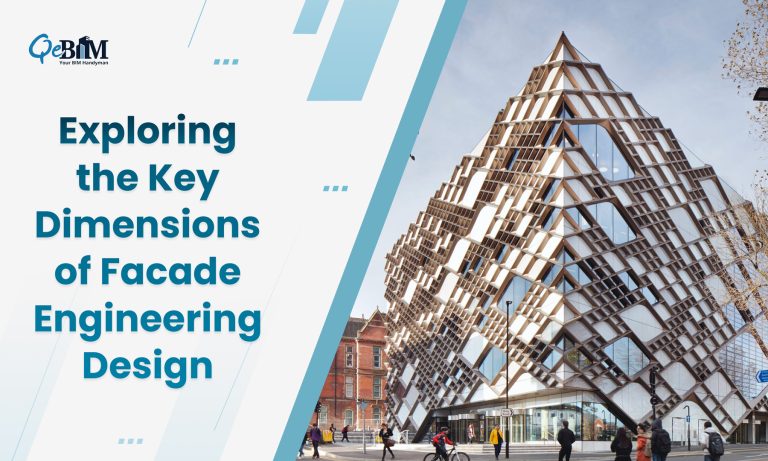Exploring the Key Dimensions of Facade Engineering Design

Introduction:
When we talk about the architectural domain, the facade serves as the face of a building, reflecting its aesthetic appeal and functionality. Facade engineering, the discipline that focuses on the design and construction of building envelopes Contributes significantly to shaping the success and durability of a structure. The accuracy of facade engineering design is paramount, as it directly influences the building’s performance, energy efficiency, and overall sustainability.
1) Aesthetic Appeal and First Impressions:
The facade is the first element of a building that captures the attention of onlookers. A well-designed and meticulously executed facade enhances the overall aesthetic appeal, contributing to the identity and character of the structure. Design inaccuracies in the facade can lead to visual inconsistencies, compromising the architect’s vision and potentially diminishing the building’s visual impact.
2) Performance and Functionality:
Beyond aesthetics, the facade serves critical functional purposes, such as providing thermal insulation, controlling natural light, and ensuring proper ventilation. Accurate facade engineering design is essential to meet performance requirements, ensuring the building’s interior remains comfortable while minimizing energy consumption and this can be achieved with accurate Façade BIM Services. Inaccuracies in design may result in thermal leaks, glare issues, or inadequate ventilation, negatively impacting the occupants’ comfort and well-being.
3) Energy Efficiency and Sustainability:
The global push towards sustainable construction practices places a significant emphasis on energy efficiency. Facade engineering directly influences a building’s energy performance, affecting heating, cooling, and lighting requirements. Accurate design and precise Architectural BIM Services ensures that the facade optimally balances natural light penetration and thermal insulation, reducing the reliance on artificial lighting and heating, thus lowering the building’s carbon footprint.
4) Structural Integrity and Safety:
Facades are not mere decorative elements; they contribute to a building’s structural stability and safety. Accurate engineering design is essential to guarantee the facade’s resilience against environmental forces, including wind loads and seismic activity. Inaccuracies in design may compromise the structural integrity of the building, posing risks to both occupants and the structure itself.
5) Material Selection and Durability:
Facade engineering encompasses the careful selection of materials that not only harmonize with the design vision but also endure the effects of weathering and aging. Design inaccuracies can lead to the inappropriate use of materials, resulting in premature deterioration, corrosion, or discoloration. Accurate design ensures the selection of materials suitable for the specific environmental conditions, contributing to the longevity and durability of the facade.
6) Regulatory Compliance:
Building codes and regulations are in place to ensure the safety and well-being of occupants. Facade engineering design accuracy is critical for compliance with these regulations. Non-compliance with the specified standards could result in legal repercussions, construction delays, or the necessity for expensive retrofits. Accurate design ensures that the facade meets or exceeds regulatory requirements, mitigating potential risks and liabilities.
7) Cost Considerations:
While accuracy in facade engineering design may require an initial investment in detailed planning and analysis, it can result in long-term cost savings. A well-designed facade contributes to energy efficiency, reducing operational costs over the building’s lifespan. Additionally, accurate design minimizes the likelihood of costly repairs or retrofits due to structural or performance issues.
Conclusion:
In the grand tapestry of architecture, the facade stands as a testament to both form and function. The accuracy of facade engineering design is undeniably critical, impacting the building’s aesthetic appeal, performance, sustainability, safety, and cost-effectiveness. Architects, engineers, and developers must recognize the profound implications of design inaccuracies and prioritize meticulous planning and execution to ensure the success and longevity of the built environment. In doing so, they contribute not only to the visual landscape of our cities but also to the creation of resilient, efficient, and sustainable structures that stand the test of time.